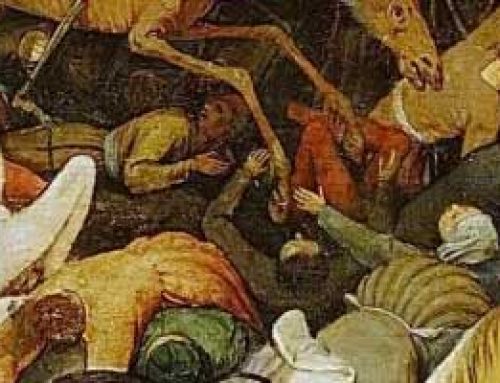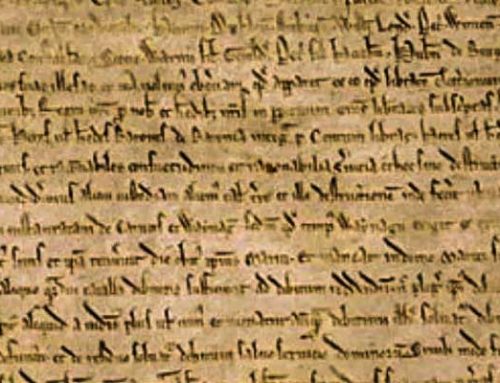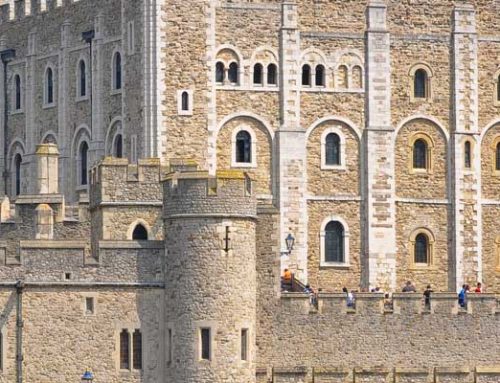Ferocious, uncivilized, and unpredictable, the Huns were nomadic warriors who terrorized Europe for a generation in the fifth century. Then, after the death of their brutal but charismatic leader, Attila, the Huns disappeared from the pages of history.
The Romans saw the Huns as half-animals; they spoke a language of grunts and had a taste for raw meat. The Huns had no interest in farming, building, or trade. They had no writing or any interest in governing. Their talent lay in attacking and plundering settled people, using fear as their primary weapon.
The Huns were pastoralists, which means they tended to animals. Throughout history, pastoralists have generally been more warlike than farmers. With no permanent home, the Huns had no interest in settling on the lands they raided. Skilled horseback riders, the Huns were known to attack quickly and travel long distances. They could appear instantly, take what they wanted and ride off again, leaving behind chaos and panic as they destroyed villages in Asia and Europe.
Scholars believe China constructed the Great Wall of China to keep out the Mongol ancestors of the Huns. Driven west by China’s Han Dynasty, the nomadic hoard exacted terror on the people in their path. As the Huns pushed west of the Caspian Sea in Western Asia, their violent raids forced the Visigoths and other Germanic tribes to move inside the borders of the Roman Empire.
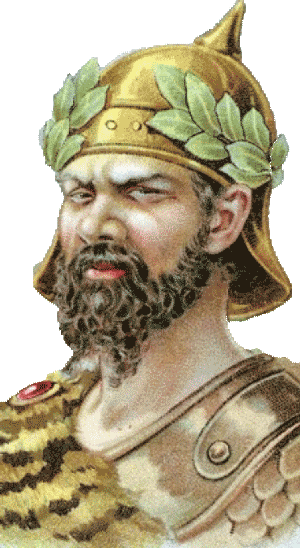
Attila_the_Hun
Attila the Hun (c. 406–453) was the ruthless and charismatic leader of his nomadic people 434 until his death. During his reign, he was one of the Roman Empire’s most most feared enemies. His Hunnic Empire fell apart shortly after his death.
By 405, the Romans allied with the Huns by paying tribute or payment for protection. The Romans also sent a young man named Aetius to live with the warriors as a gesture of their goodwill. For three years, Aetius lived with the Huns and learned their ways. He became close to Uldin, a savage prince who later ruled the Huns. Aetius’ experience with the Huns later served him when he became the most dominant general of the Western Roman Empire.
When Uldin died, his nephew Bleda briefly ruled the Huns. Bleda was killed, probably at the hand of his younger brother, Attila. A ruthless leader, Attila often impaled those who opposed him, driving their bodies onto sharp sticks and leaving them to a torturous death that could take days.
Attila transformed the Huns from savage nomads into a disciplined army. Instead of gathering livestock and roots to survive, the Huns amassed wealth by collecting tribute and plundering cities throughout Southeast Europe. In 435, as Attila began military campaigns to build a powerful empire, he found an unusual ally in a Roman princess.
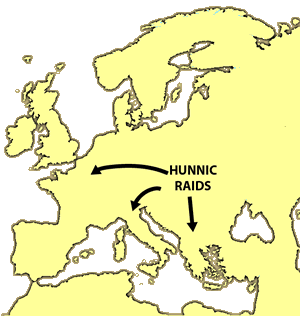
From their base in Central Europe, the Huns attacked both the Eastern Roman Empire and the Western Roman Empire.
Honoria was the older sister of Emperor Valentinian. When she became pregnant with the child of a servant, Valentinian ordered his sister to marry a Roman senator. To escape her fate, Honoria sent a messenger to Attila, offering herself as a bride if the Huns could rescue her. When the Roman emperor refused Attila’s demand for his sister, the Huns began cutting a swath of destruction through the Roman Empire, leading to a great confrontation in 451.
The two armies met in the Battle of Châlons in present-day France. Aetius, the general who once lived with the Huns, led the Romans. After two days of brutal fighting, the better-trained Roman army outflanked the Huns. Aetius allowed his defeated enemy to retreat; the Roman general believed that if he destroyed the Huns, the Visigoths, and other Germanic cultures would become an even more significant threat to the Roman Empire.
Defeated but still defiant, Attila regrouped his forces and returned to Italy to claim Honoria. In 452, his army suddenly retreated after a meeting with the head of the Christian Church. Church stories say Pope Leo I, without an army or weapons, met Attila, a man he called the “scourge of God.” Their meeting was secret, so we don’t know why Attila suddenly withdrew his forces from Italy. Leo may have bribed the Huns, or the charismatic Pope may have convinced Attila to stop fighting. Italy had suffered from a poor harvest the previous year, so there was little food for Attila’s starving army. There is also evidence that many of Attila’s soldiers were suffering from the plague. Attila left Italy to return to his home in present-day Hungary.
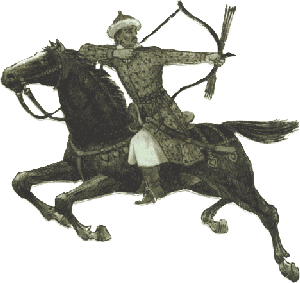
Hun_archer
The Huns and Horses
The Huns exacted terror over a wide swath of Europe and Asia because they could attack quickly and without warning. The Huns knew little of farming or literacy but were expert horsemen. Hunnic warriors often lived in austere camps, but many outfitted their horses in saddles and stirrups decorated with gold and silver. Legends say boys were taught to ride as soon as they could walk.
The Huns’ most deadly weapon was the recurve bow. Unlike a traditional bow, the Huns created a weapon that curved away from the archer when unstrung. The Huns carefully fashioned their weapons from wood, bone, and glue made from the connective tissues of horses.
The recurve bow generated enormous power from a short pull. A traditional bow requires an archer to stand firmly, but Hunnic archers could shoot from horseback; an expert shooter could hit a target from more than 500 feet. Even in retreat, many warriors were so adept that they could turn around while riding to shoot—using only their legs to remain stable on the galloping horse. From this tactic, we get the term “parting shot.”
A year later, the Huns celebrated a great feast as Attila took a new bride, a teenage girl named Ildico. Legends say that Attila retreated to his tent in a drunken stupor at the end of the festivities. The next morning, the new bride was found quivering in their tent after finding that Attila had choked to death from a nosebleed during the night.
The Huns, without Attila, were no longer a unified people. Attila’s death led to a civil war among his sons. Many of the subject people stopped paying tribute, and the Huns slowly disappeared from history as they assimilated into other cultures.
Resources
Download this lesson as Microsoft Word file or as anAdobe Acrobat file.
Listen as Mr. Dowling reads this lesson.
Mr. Donn has an excellent website that includes a section on the Middle Ages.
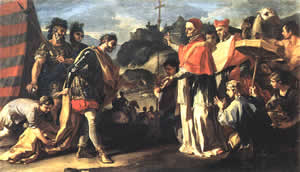
Attila_meets_the_pope
The Meeting of Pope Leo and Attila by Francesco Solimena (b. 1657 – d. 1747). Leo may not have been as inflential in convincing the “Scourge of God” to leave Italy as Solimena imagines in his painting.


